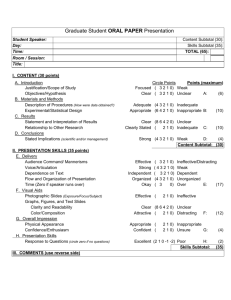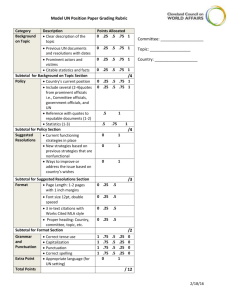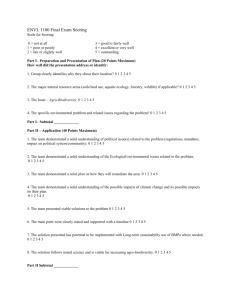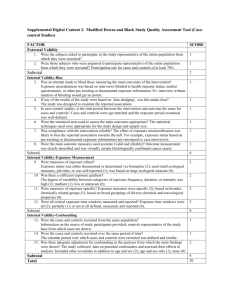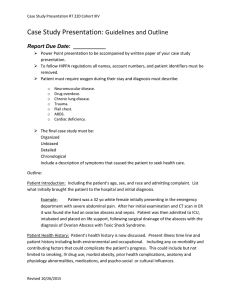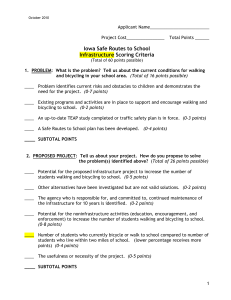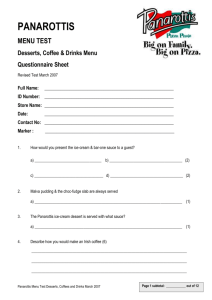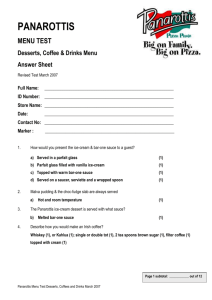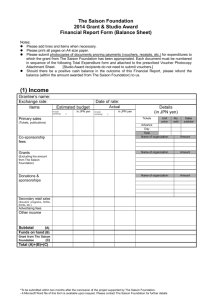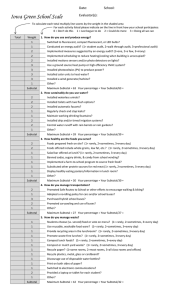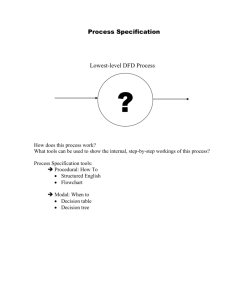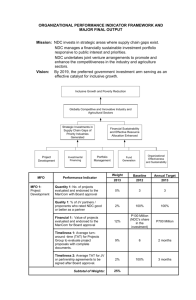Complexity Analysis Guideline (Appendix F.2)
advertisement
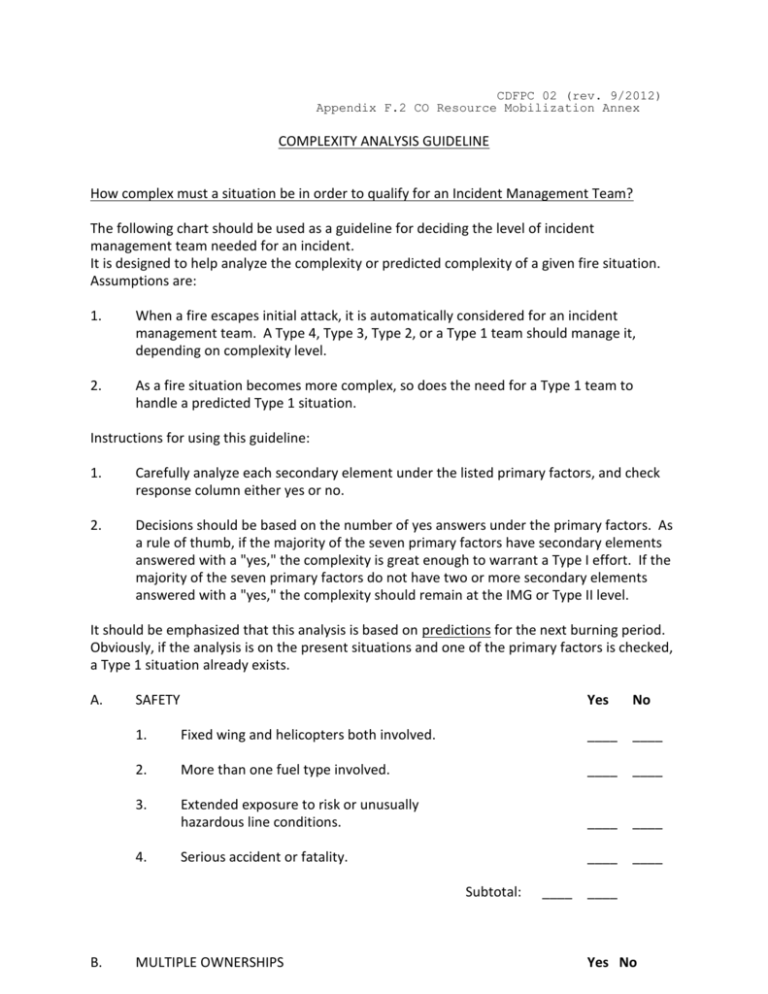
CDFPC 02 (rev. 9/2012) Appendix F.2 CO Resource Mobilization Annex COMPLEXITY ANALYSIS GUIDELINE How complex must a situation be in order to qualify for an Incident Management Team? The following chart should be used as a guideline for deciding the level of incident management team needed for an incident. It is designed to help analyze the complexity or predicted complexity of a given fire situation. Assumptions are: 1. When a fire escapes initial attack, it is automatically considered for an incident management team. A Type 4, Type 3, Type 2, or a Type 1 team should manage it, depending on complexity level. 2. As a fire situation becomes more complex, so does the need for a Type 1 team to handle a predicted Type 1 situation. Instructions for using this guideline: 1. Carefully analyze each secondary element under the listed primary factors, and check response column either yes or no. 2. Decisions should be based on the number of yes answers under the primary factors. As a rule of thumb, if the majority of the seven primary factors have secondary elements answered with a "yes," the complexity is great enough to warrant a Type I effort. If the majority of the seven primary factors do not have two or more secondary elements answered with a "yes," the complexity should remain at the IMG or Type II level. It should be emphasized that this analysis is based on predictions for the next burning period. Obviously, if the analysis is on the present situations and one of the primary factors is checked, a Type 1 situation already exists. A. SAFETY No 1. Fixed wing and helicopters both involved. ____ ____ 2. More than one fuel type involved. ____ ____ 3. Extended exposure to risk or unusually hazardous line conditions. ____ ____ Serious accident or fatality. ____ ____ 4. Subtotal: B. Yes MULTIPLE OWNERSHIPS ____ ____ Yes No CDFPC 02 (rev. 9/2012) 1. Fire burning on more than one land ownership. ____ ____ 2. Disputed fire responsibility/authority. ____ ____ 3. Potential for claims. ____ ____ ____ ____ Subtotal: C. PERSONNEL AND OTHER RESOURCES COMMITTED Yes No 1. 200 or more people per shift. ____ ____ 2. Two or more divisions. ____ ____ 3. Multi-support agencies involved. ____ ____ 4. Local resources (personnel and equipment) not available or in condition suitable for initial attack. ____ ____ ____ ____ Subtotal: D. CONTAINMENT COST 1. E. $50,000 or more per day. Yes No Subtotal: ____ ____ FIRE BEHAVIOR 1. Flame length of 6 feet or greater. ____ ____ 2. Duration uncontrolled - 2 or more burning periods. ____ ____ 3. Severe or extremely variable topography. ____ ____ 4. 1 Hr. fuel moisture 5% or less. ____ ____ F. Eye-level wind forecast greater than 20 mph. ____ ____ G. Active crowning/spotting expected. ____ ____ ____ ____ Subtotal: CDFPC 02 (rev. 9/2012) H. CULTURAL RESOURCES Yes No 1. Urban interface. ____ ____ 2. Summer homes. ____ ____ 3. Other developments. ____ ____ ____ ____ Subtotal: I. POLITICAL PROBLEMS 1. Controversial fire policy. ____ ____ 2. Poor relationship between ownerships. ____ ____ 3. Pre-existing controversies. ____ ____ 4. Local organization unable to establish positive media relationships. ____ ____ Subtotal: ____ ____ GRAND TOTAL: ____ ____ Recommended Management Level Total # of “Yes” answers: 0-2 3-7 8 - 13 14+ Reinforced attack Local Type 4 or 3 Team Type 2 team Type 1 team Note: Other considerations may influence decision on which Management Level team to request. If Management Level used is different than above indicates, use space below or back of this sheet for documentation. (continue on back as needed)
